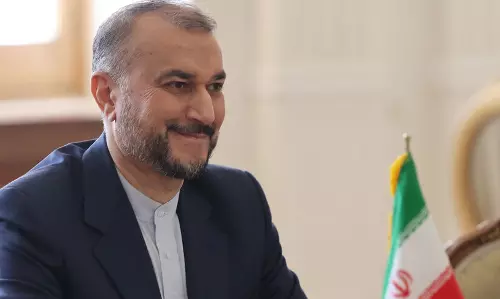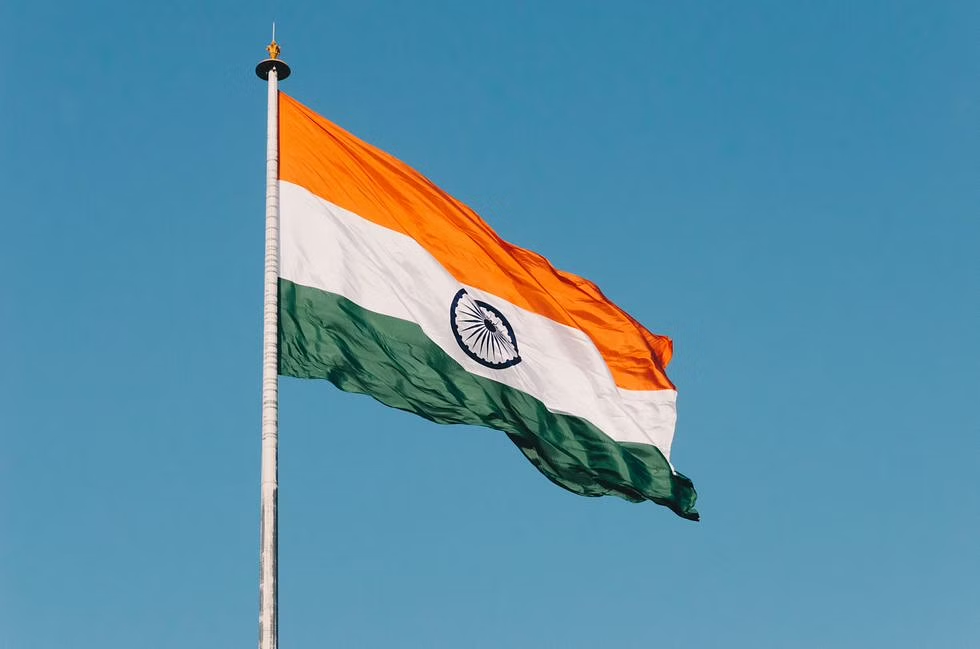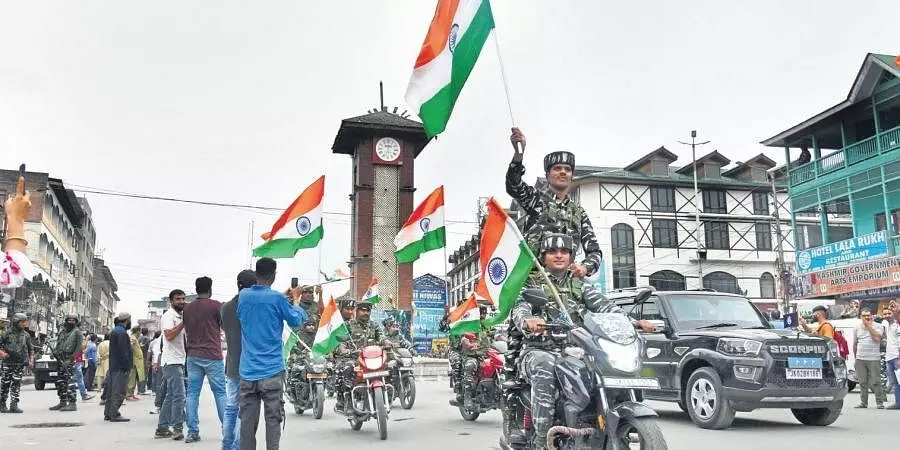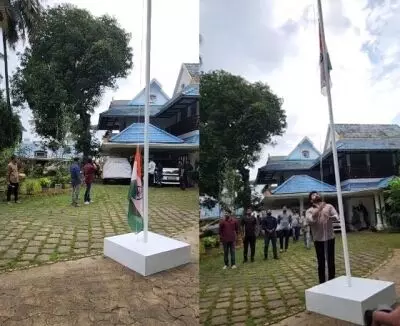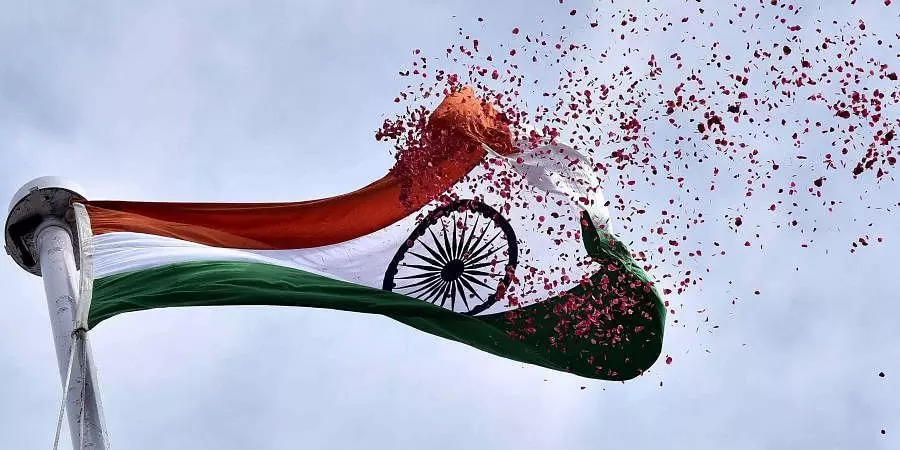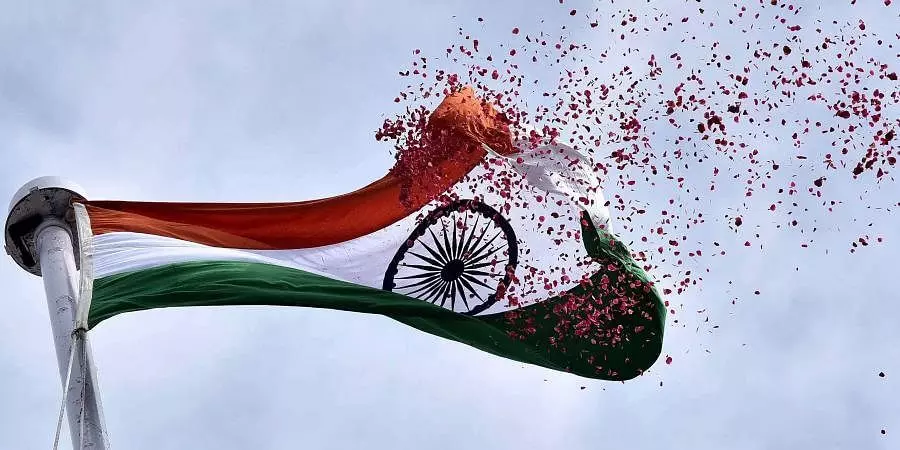
The metamorphosis of those who demurred: the evolution of the tricolor
text_fieldsThere are certain moments that history keeps in store for some - which later come to be called irony of fate and poetic justice. The tricolor bearing Ashoka Chakra has some such proud moments. It was at one of those historic moments when the last Viceroy himself who lowered the Union Jack, the flag of British imperialism, himself saluted with steady chest India's national flag as the first Governor General of India. Trevor Royle's book The Last Days of the Raj records the moment when our tricolor first rose to the horizon of freedom. All the protocols of Mountbatten, who came down from the Viceroy's House to Princess Park near the India Gate where the ceremony was taking place, went haywire as the people flocked to the historic scene. "I have never seen such an exciting influx of thousands of people," BBC correspondent Wynford Vaughan Thomas put it into words for his audience. "They are dancing with joy and dashing to the hoisting ceremony of India's new flag." Mountbatten could not alight from the vehicle because of the crowd. He stood up and saluted the national flag.
Royle also narrates another interesting fact in that historical event. "That national flag was designed by Badruddin Tyabji, a Muslim. Mahatma Gandhi had earlier used the tricolor flag with Charka printed on white for the Congress. He persuaded Gandhi to write the Ashoka Chakra as a memorial to Emperor Ashoka, who is revered by Hindus and Muslims alike, without the Charka. The first national flag of India flown in Nehru's car that night was donated by Tyabji's wife (page 172).
However, historian Capt. Panduranga Reddy of Hyderabad refutes the words of the British historian that Badruddin Tyabji, who was an ICS officer and later Vice Chancellor of Aligarh Muslim University, designed the national flag as seen today, and instead gives the credit to his wife Surayya. Born in Hyderabad in 1919, Surayya was an accomplished artist. Badrudin's daughter Laila Tyabji also has recalled that her mother had versatile talent who enjoyed painting, cooking, sewing, horse riding and swimming. She was a member of the National Flag Committee of the Constituent Assembly.
In the context of independence, leaders of the nation were insistent on having a national symbol that would proclaim its own existence. Jawaharlal Nehru assigned that task to Badruddin Tayabji. Many introduced various designs but none of them was free from the British and colonial touch. Finally, the design presented by 28-year-old Surayya was accepted as the national emblem with four lions and the Ashoka Chakra at the base.
Along with the symbol, the national flag also came up for discussion. In the twenties, freedom fighter Pingali Venkaiah introduced a Swaraj flag with the permission of Mahatma Gandhi. It later became the tricolor of the Congress with its charkha (the spinning wheel) However, after independence, it was realised that a party flag should not become the official flag of the country. Thus the Ashoka Chakra replaced the Charkha in the national symbol. "They painted the Ashoka Chakra in black with a white centre, but Gandhi did not like that color. That's how it became navy blue.
Surayya stitched the new national flag of India close to midnight. That very night it fluttered on Jawaharlal Nehru's car. On July 22, the national flag was unanimously adopted by all.
There were also those could not digest the national flag even at that time. The reason for this is explained in the Sangh Parivar's ideological work Bunch of Thoughts by RSS ideologue M S Golwalkar:
"For example, our leaders have set up a new flag for our country. Why did they do so? It is just a case of drifting and imitating. How did this flag come into being? During the French Revolution, the French put up three stripes on their flag to express the triple ideas of 'equality', 'fraternity' and 'liberty'. The American Revolution inspired by similar principles took it up with some changes. The three stripes therefore held a sort of fascination for our freedom fighters also. So, it was taken up by the Congress. Then it was interpreted as depicting the unity of the various communities - the saffron colour standing for the Hindu, the green for the Muslim and the white for all the other communities. Out of the non -Hindu communities the Muslim was specially named because in the minds of most of those eminent leaders the Muslim was dominant and without naming him they did not think that our nationality could be complete !
"When some persons pointed out that this smacked of a communal outlook, a fresh explanation was brought forward that the 'saffron' stood for sacrifice, the 'white' for purity and the 'green' for peace and so on. All these interpretations were discussed in the Congress Committees during those days. Who can say that this is a pure and healthy national outlook? It was just a politician's patchwork, just political expediency. It was not inspired by any national vision or truth based on national history and heritage. The same flag has been taken up today as our State flag with only a minor modification. Ours is an ancient and great nation with a glorious past. Then, had we no flag of our own? Had we no national emblem at all these thousands of years? Undoubtedly, we had. Then, why this void, this utter vacuum in our minds?" (Bunch of Thoughts pages 226-227).
Golwalkar suggested as an alternative 'bhagwa dhwaj' in saffron. He expressed confidence that the entire nation would eventually bow before this saffron flag.
In its August 14, 1947 issue, the RSS mouthpiece Organiser said, "The people who have come to power by the kick of fate may give in our hands the tricolour, but it will never be respected and owned by Hindus. The word three is in itself an evil, and a flag having three colours will certainly produce a very bad psychological effect and is injurious to a country."
History remaining as it is, in the celebration of 75 years of independence, the tricolor flag is being waved steadily, making all the old objections a paradox and adorning housetops and skyline all over the country with its message.









